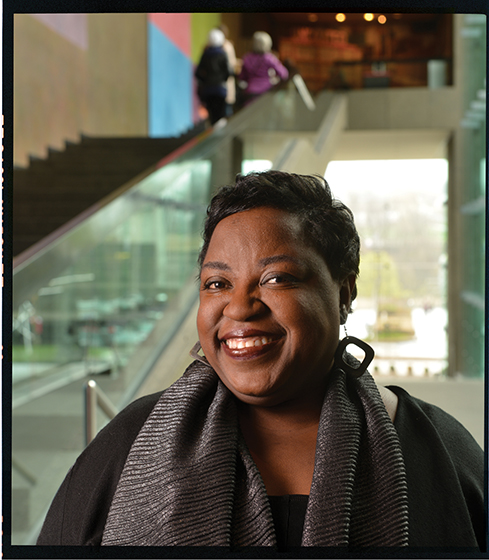 Summer 2015
Summer 2015|
Cecile Shellman
When Cecile Shellman speaks about why a person might feel excluded, alienated, or worse yet, not worthy, she speaks from someplace deep inside where she usually doesn’t like to go. To the late ‘80s, when she moved from her home country of Jamaica to Rigby, Idaho, a town where she was an utter anomaly. She remained undeterred. The polished, upbeat, articulate museum professional, who last year was named Carnegie Museums of Pittsburgh’s diversity catalyst, earned a bachelor of fine arts in painting from Brigham Young University and a graduate certificate in museum studies from Harvard University. She’s a painter, a poet, a singer, a former art-gallery manager, and museum curator. Before moving with her husband to Pittsburgh, she was education outreach specialist at the John F. Kennedy Presidential Library and Museum in Boston, where her career as a diversity change-agent took shape. She’s served as artistic director at the August Wilson Center for African American Culture and program manager for Pittsburgh Public School’s Culturally Responsive Arts Education initiative. Shellman also worked on community programming for Carnegie Museum of Natural History’s showing of RACE: Are We So Different?, where her efforts helped earn the museum a 2014 YWCA Racial Justice Award in the Arts. Last year, she was named program chair of the American Alliance of Museum’s diversity committee. At Carnegie Museums, she’s working with colleagues throughout the organization to develop and implement diversity and accessibility plans that build on existing initiatives. “We are all different,” Shellman says. “The arts—which are my love—can transcend those differences. For me, museums are the great equalizer.” What was it like moving from Jamaica to Rigby, Idaho, as a college student in 1988?It was extremely challenging. I encountered prejudice, and there was a lot of misunderstanding because of that. There were people there who had never met a black person before and didn’t want to. How did you deal with that?I had a lot to push against. I learned to hold my own and to stick up for what I believed, and to make others see value in what I could do, and not just because I was different. In what ways did your work at the JFK Library and Museum change you?I learned so much about how museums can make a difference in people’s lives, especially people for whom the traditional systems just didn’t work. We did a lot of post 9/11 work with schools. There was starting to be a lot of animosity towards the Islamic community, and I worked with a few groups in Boston to come up with a curriculum for schools. I saw firsthand that there were teachers and students who were really helped by that—who understood why having empathy, why learning about other cultures and people is so important. What are your goals at Carnegie Museums?Inclusion—that is the goal. It’s everyone seeing themselves in our museums. The elderly feeling that they’re welcome; somebody who uses a wheelchair feeling that they could go through our museums and be at ease. We want to determine who we are missing, whose voices we are not hearing. The idea is to listen to those voices. What can a museum do differently?It’s not a one size fits all situation. We may find after assessing ourselves, after being assessed outwardly, that one population of the society is being excluded; or maybe we’re not giving as much attention to a certain part of our collection that’s very valuable to a group of people. This has implications for not just programming but also marketing, for curating, for collecting. Any particularly memorable experiences so far?Every time I talk to an organization or send an email and they realize that Carnegie Museums cares about that specific organization and population represented, they get so excited. More specifically, with the RACE exhibit, it was the experience of seeing and hearing people be vulnerable in a museum space. What I like about museums are the literal and figurative conversations that happen. And I loved how the arts and sciences kind of came together for RACE. Is there a single RACE program that stood out?For me, it was the poetry workshop with Terrance Hayes. Among the people there, some had masters and PhDs and some were teenagers who had never written poetry. We went through the RACE exhibit several times, and there were some magnificent pieces that came out of that. Several people said they were changed by it. It showed the power of an exhibit, the power of art making, the power of a museum space. It was really magical. Museums can do that sort of thing. Museums can help you uncover things in your own life or your community or family that might be beneficial to you for the rest of your life.
|
Saving the Songbird · Before They Were Famous · Visually Telling · Cosmic Bling · Special Section: A Tribute to Our Donors · President's Note · NewsWorthy · Artistic License: Born to Paint · Science & Nature: Making It Count · Travel Log · The Big Picture
 |
Copyright © 2017 CARNEGIE Magazine. All rights reserved. |

